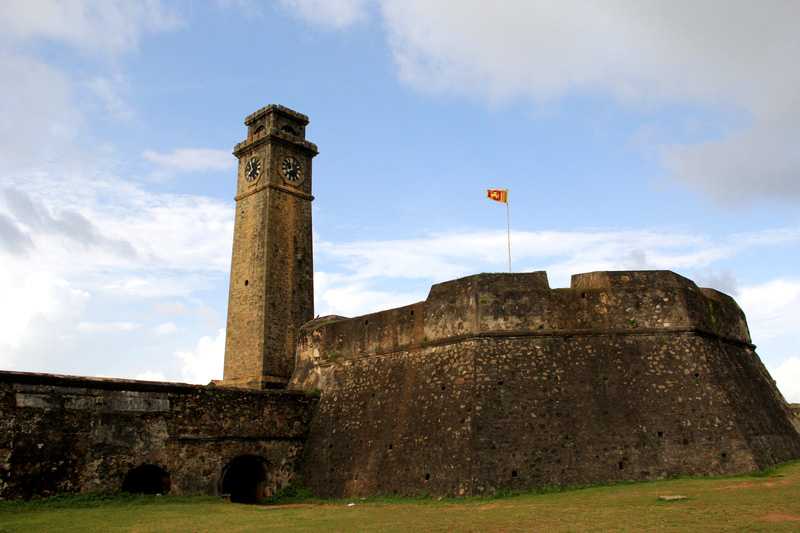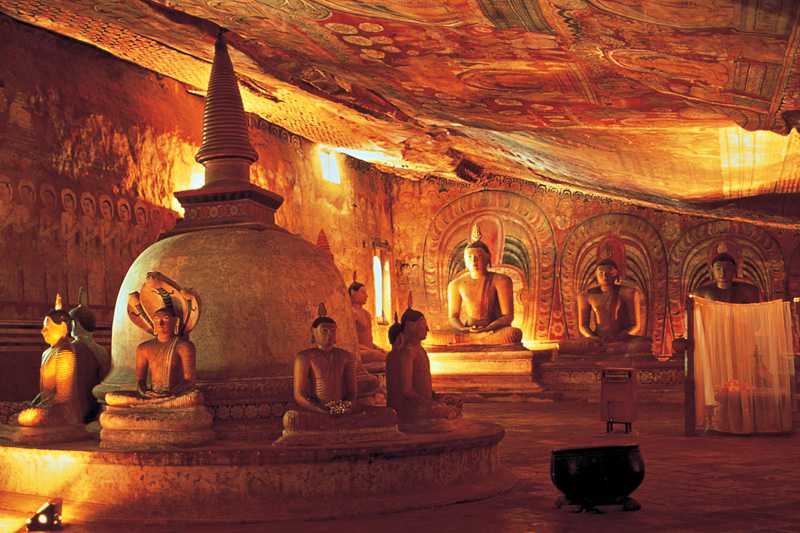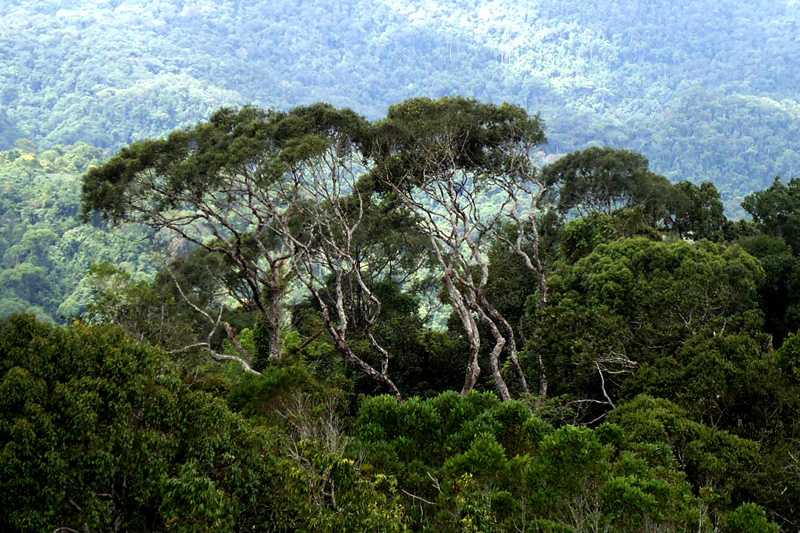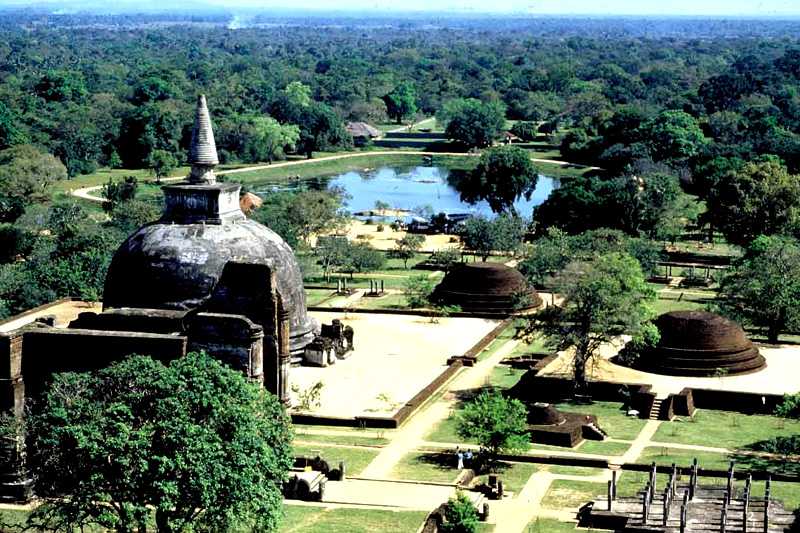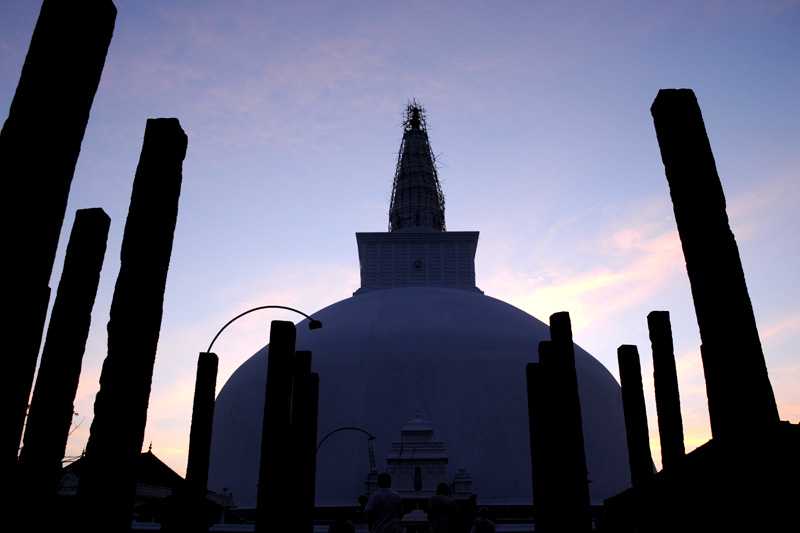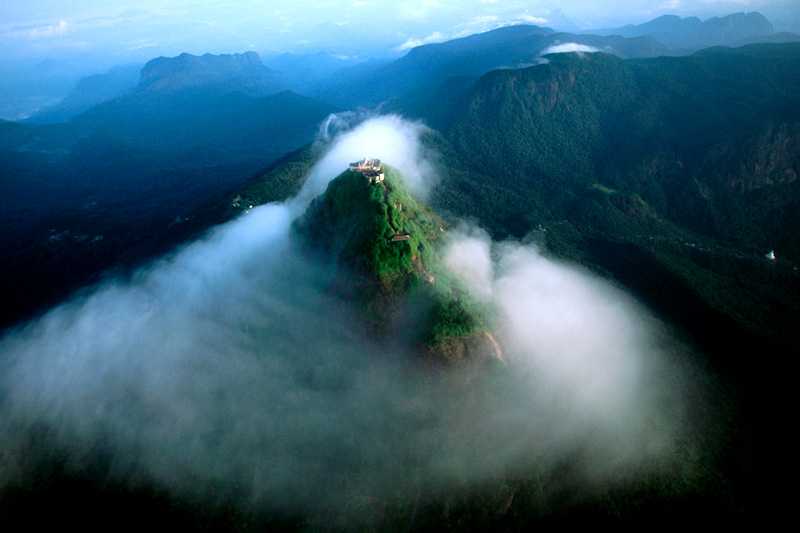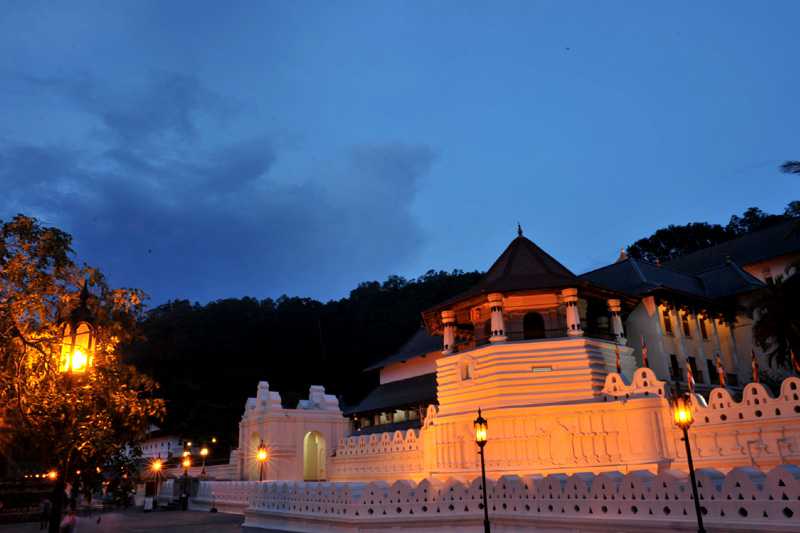Sigiriya
The Cultural Triangle Project, launched by the Government of Sri Lanka, focused its attention on Sigiriya in 1982. Archaeological work began on the entire city for the fi rst time under this project. There was a sculpted lion's head above the legs and paws fl anking the entrance, but the head had broken down many years ago.
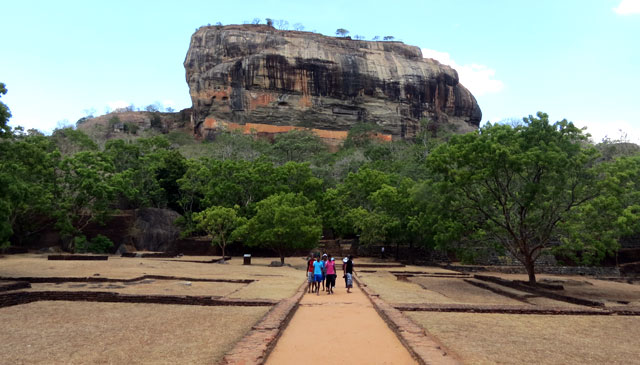
Sigiriya consists of an ancient castle built by King Kassapa during the 5th century. However, the beginnings and the original builder of Sigiriya is challenged by many local and foreign historians and archaeologists. The Sigiriya has the leftovers of an upper palace on the fl at top of the rock, a midlevel terrace including the Lion Gate and the mirror wall with its frescoes, the lower palace that clings to the slopes below the rock; the moats, walls, and gardens extending for some hundreds of metres out from the base of the rock.
It is both a palace and a fortress. Despite its age, the splendour of the palace still furnishes a stunning insight into the ingenuity and creativity of its builders. The upper palace on the top of the rock includes cisterns cut into the rock that still retain water. The moats and walls that surround the lower palace are still gracefully attractive.
Sigiriya is considered one of the most important urban planning sites of the fi rst millennium, and the site plan is considered very elaborate and imaginative. The plan combined concepts of balance and irregularity to intentionally link the man-made geometrical and natural forms of the surroundings. On the west side of the rock lies a park for the royals, laid out on a balanced plan; the park contains water-retaining structures, including sophisticated surface/subsurface hydraulic systems, some of which still work to date. In the south lies a man-made reservoir; these were extensively used from the previous capital of the dry zone of Sri Lanka. Five gates were placed at the entrances. The more sophisticated western gate is regarded to have been reserved for the royals.
John Still in 1907 states; "The whole face of the hill appears to have been a gigantic picture gallery... the largest picture gallery in the world perhaps". The paintings would have covered most of the western face of the rock, covering an area 140 metres long and 40 metres high. There are references in the graffi ti to 500 ladies in these paintings. However, many more are lost forever, having been wiped out when the Palace once more became a monastery so that they would not disturb meditation. However, historicity states that it would have been a monastery before King Kassapa renovated it. Many frescoes, different from the popular collection, can be seen elsewhere on the rock surface, for example on the surface of the location called the "Cobra Hooded Cave".
Although the frescoes are classifi ed as in the Anuradhapura period, the painting style is considered unique; the line and style of application of the paintings differing from Anuradhapura paintings. The lines are painted in a form which enhances the sense of volume of the fi gures. The paint has been applied in sweeping strokes, using more pressure on one side, giving the effect of a deeper colour tone towards the edge. Other paintings of the Anuradhapura period contain similar approaches to painting, but do not have the sketchy lines as of the Sigiriya style, having a distinct artist's boundary line. The true identities of the ladies in these paintings still have not been confi rmed. There are various ideas about their identity. Some believe that they are the wives of the king while some think that they are women taking part in religious observances. These pictures have a close resemblance to some of the paintings seen in the Ajanta caves in India. The frescoes, depicting beautiful female fi gures in graceful contour or colour, point to the direction of the Kandy temple, sacred to the Sinhalese. The sacred temple of tooth was built much after Sigiriya.
Mirror wall made of some kind of porcelain, the wall is now partially covered with verses scribbled by visitors to the rock. The mirror wall is well preserved. Some historians and archaeologists state that the verses date from the 8thL century but there are many who challenge it. People of all types wrote on the wall, on varying subjects such as love, irony, and experiences of all sorts. Further writing on the mirror wall has now been banned. One such poem in Sinhala is.
The transliteration is: "I am Buda [the writer's name]. Came with all my family to see Sigiriya. Since all the others wrote poems, I did not!" He has left an important record that Sigiriya was visited by people beginning a very long time ago. Its beauty and majestic appearance made people stand in awe of the technology and skills required to build such a place. The most important aspects of Sigiriya are the gardens and it is among the oldest landscaped gardens in the world. The gardens are divided into three distinct but linked forms: water gardens, cave and boulder gardens, and terraced gardens.
The water gardens are seen in the central section of the western gardens. Three principal gardens are found here. The fi rst garden consists of a plot surrounded by water. It is connected to the main precinct using four causeways, with gateways placed at the head of each causeway. This garden is built according to an ancient garden form and is one of the oldest surviving models of this form.
The second contains two long, deep pools set on either side of the path. Two shallow, winding streams lead to these pools. Fountains made of circular limestone plates are placed here. Underground water conduits supply water to these fountains which still function, especially during the rainy season. Two large islands are located on either side of the second water garden. Summer palaces are built on the fl attened surfaces of these islands. Two more islands are located farther to the north and the south, in a manner similar to the island in the fi rst water garden.
The third garden is sited on a higher level than the other two with a large octagonal pool on a raised podium on its northeast corner. The large brick and stone wall of the citadel is on the eastern edge of this garden.
The water gardens are built on the east-west axis. They are connected with the outer moat on the west and the large artifi cial lake to the south of the rock. All the pools are also interlinked using an underground conduit network fed by the lake, and connected to the moats. A miniature water garden is located to the west of the fi rst water garden, consisting of several small pools and watercourses. This recently discovered smaller garden appears to have been built after the occupation of King Kassapa, possibly between the 10th and 13th centuries. This proves that Sigiriya was occupied by many from pre history and even after King Kassapa.
The boulder gardens consist of several large boulders linked by winding pathways. The gardens extend from the northern slopes to the southern slopes of the hills at the foot of Sigiriya rock. Most of these boulders had a building or pavilion upon them; there are cuttings that were used as footings for brick walls and beams.
The audience hall of the king was positioned in the boulder garden, the remains of which are seen on the fl attened and polished summit of a large boulder. There is a fi vemetre-long granite throne in this hall. The throne is carved from the boulder itself, and is not separated from it. Another notable feature in the boulder garden is the Cistern rock, named after a large, carved cistern atop it. A large archway, created by two boulders, provides access to the terraced gardens.
The terraced gardens are formed from the natural hill at the base of the Sigiriya rock. A series of terraces rises from the pathways of the boulder garden to the staircases on the rock. These have been created by the construction of brick walls, and are located in a roughly concentric plan around the rock. The path through the terraced gardens is formed by a limestone staircase. From this staircase, there is a covered path on the side of the rock, leading to the uppermost terrace where the lion staircase is situated.
Sigiriya is used as the location of many of the events in the science-fi ction novel The Fountains of Paradise by Arthur C. Clarke. Clarke changed the name to Yakkagala ("Demon Rock") in the book. What made him to do that has to be given serious thought.
Another view is that; King Kassapa constructed an open mouth lion's head and built a new entrance and renamed Palace Chitrakoota of Lanka as 'Sinhagiriya' / 'Sigiriya'. It is confi rmed in Mahavamsa. Had a lion's head entrance existed before it would certainly appear in Ramayana, as Hanuman after his spying tour detailed the fortress. Dr Mangala Illangasingha, Dean of the Faculty of Archaeology in the University of Kelaniya Sri Lanka in an article to 'Silumina' weekend Sinhala newspaper on 1989 February 12th stated that 'even if Kassapa employed the whole nation to build Sigiriya Fortress he would not have built this massive fortress in such a short period of time'. "Rawana Katha" an ancient Ola book says that, after Rawana' s death Vibishana came to power and transferred the royal palace–fortress and capital from hill country to Kelaniya. Chitrakoota, the palace of Rawana became the abode of Yakkha noble called Chithraraja, a relative of Vibishana. Chithraraja's palace had been a Yakkha Temple and later King Dhatusena's son Kassapa [459-447 AD] arranged a coup d'état against the father and chose Chitrakoota Temple for his palace fortress, as he believed that his mother was a descendent of Yakkha line. King Kassapa is the only King who renovated and maintained Sigiriya.







